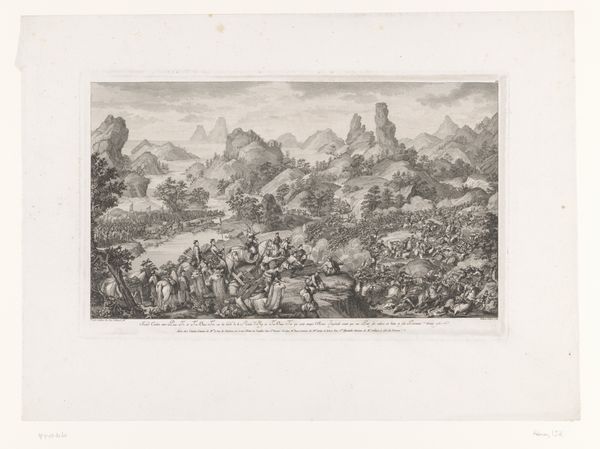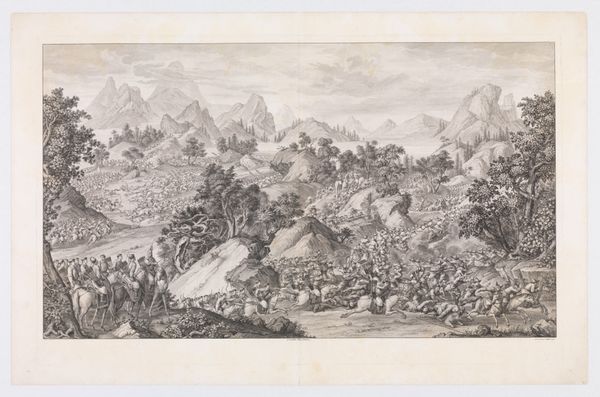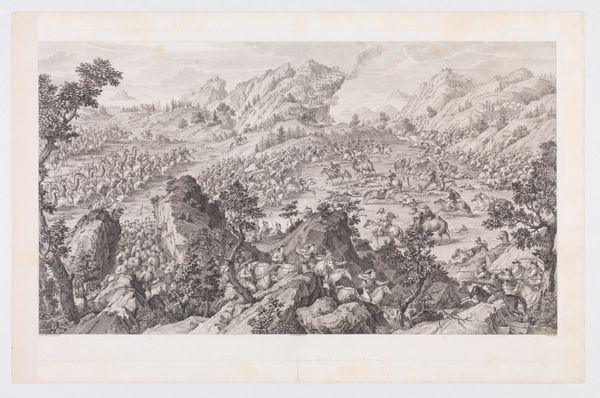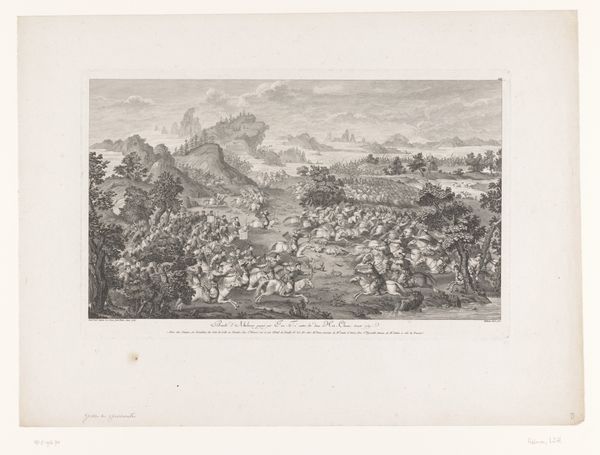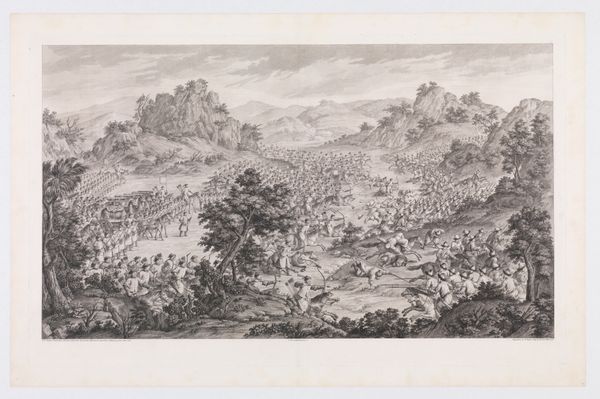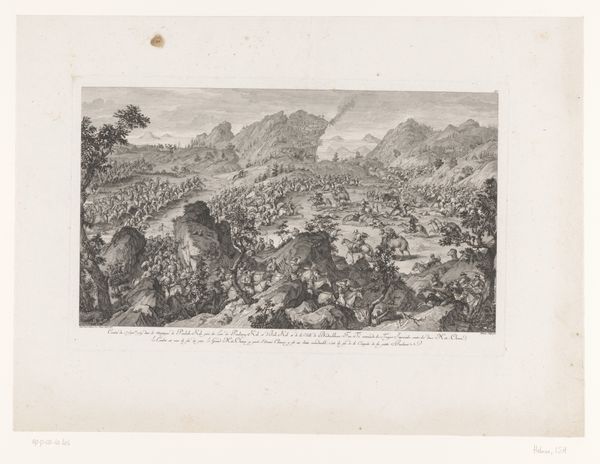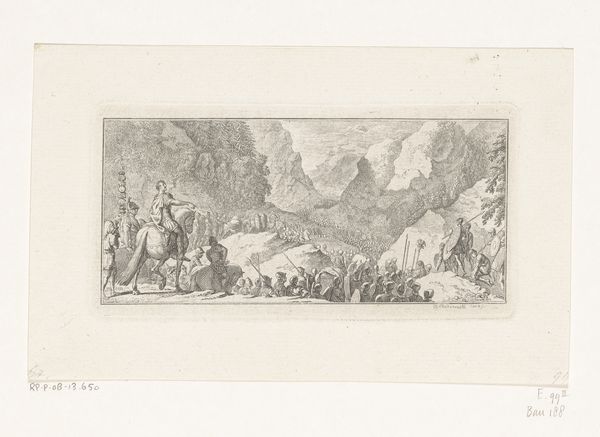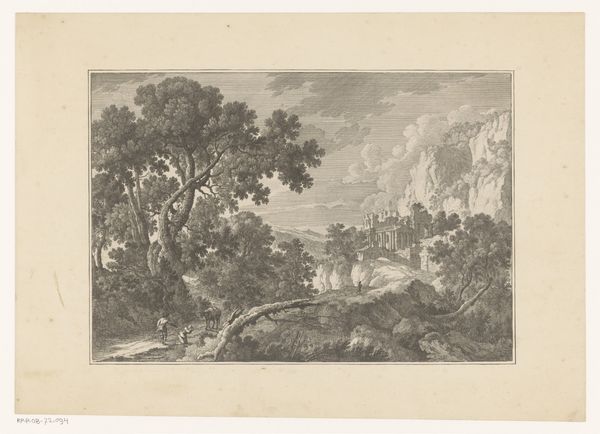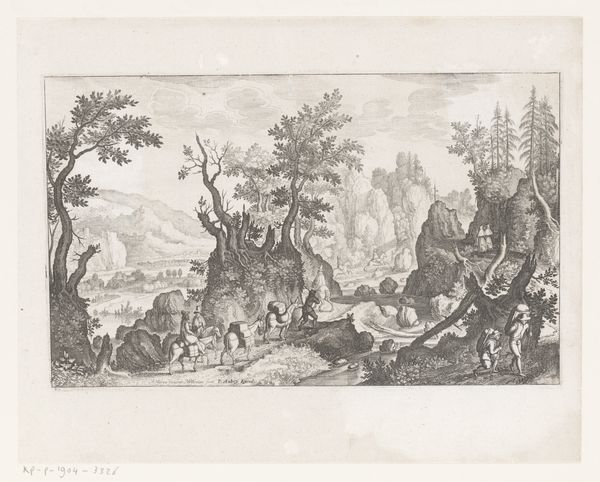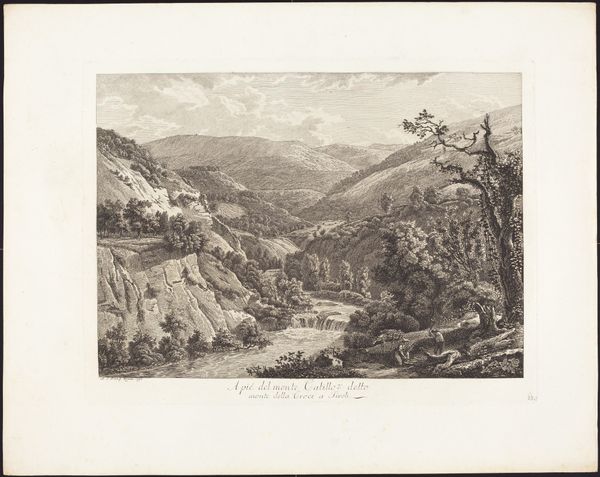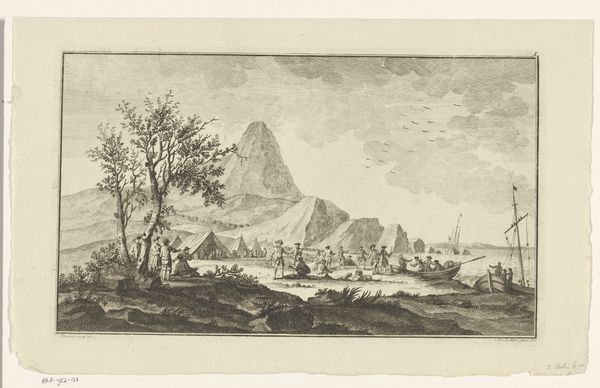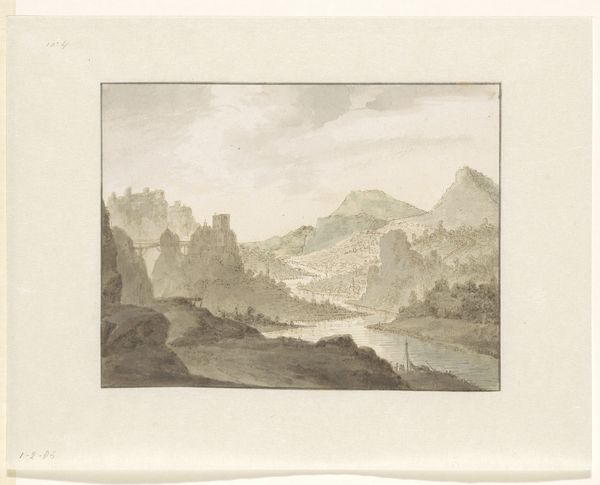
print, engraving
# print
#
landscape
#
classical-realism
#
figuration
#
line
#
history-painting
#
academic-art
#
engraving
Dimensions: height 264 mm, width 434 mm
Copyright: Rijks Museum: Open Domain
Curator: It is fascinating to imagine Isidore-Stanislas Helman, a name echoing forgotten empires, etching away at his copper plate in 1785, isn't it? What thoughts does "Slag van Qos-Qulaq," rendered meticulously in print, conjure for you? Editor: The sheer scale of this landscape! There are tiny figures locked in combat against the backdrop of majestic mountains; the entire scene is overwhelming and, frankly, a little terrifying. How would you interpret this work, its depiction of grand conflict within nature's immensity? Curator: The engraving captures that curious human penchant for juxtaposing epic dramas with humbling natural settings. Think of it, not just as history painting, but a play in shades of grey where power meets mortality under the indifferent gaze of nature. Notice the detail in the line work. Does it convey chaos or a disturbingly elegant choreography? Editor: I initially read chaos, but the more I examine it, the more calculated the composition seems. Are you suggesting Helman wasn't merely documenting history but staging it for us, imbuing a chaotic clash with the calculated precision of classical art? Curator: Precisely! The classical structure elevates, perhaps even glorifies. What implications might that hold given that this image depicts "Slag van Qos-Qulaq", or the Battle of Qos-Qulaq. Does that strike you as... appropriate? Editor: It's unsettling. By glorifying battle through the lens of academic art, is it almost... legitimizing violence, stripping away the messy, human cost? The artist does offer the historical record of the confrontation, so the beauty may be intended for posterity rather than for its direct impact on viewers. Curator: Perhaps, perhaps not. Art, thankfully, resists definitive readings. But maybe contemplating art in this manner helps unlock forgotten aspects that the artwork holds for us, even after the artwork seems as though it may offer no more. Thank you. Editor: My pleasure! I never considered how 'historical documentation' and artistic intent can clash and harmonize at the same time. This was so very helpful!
Comments
No comments
Be the first to comment and join the conversation on the ultimate creative platform.
